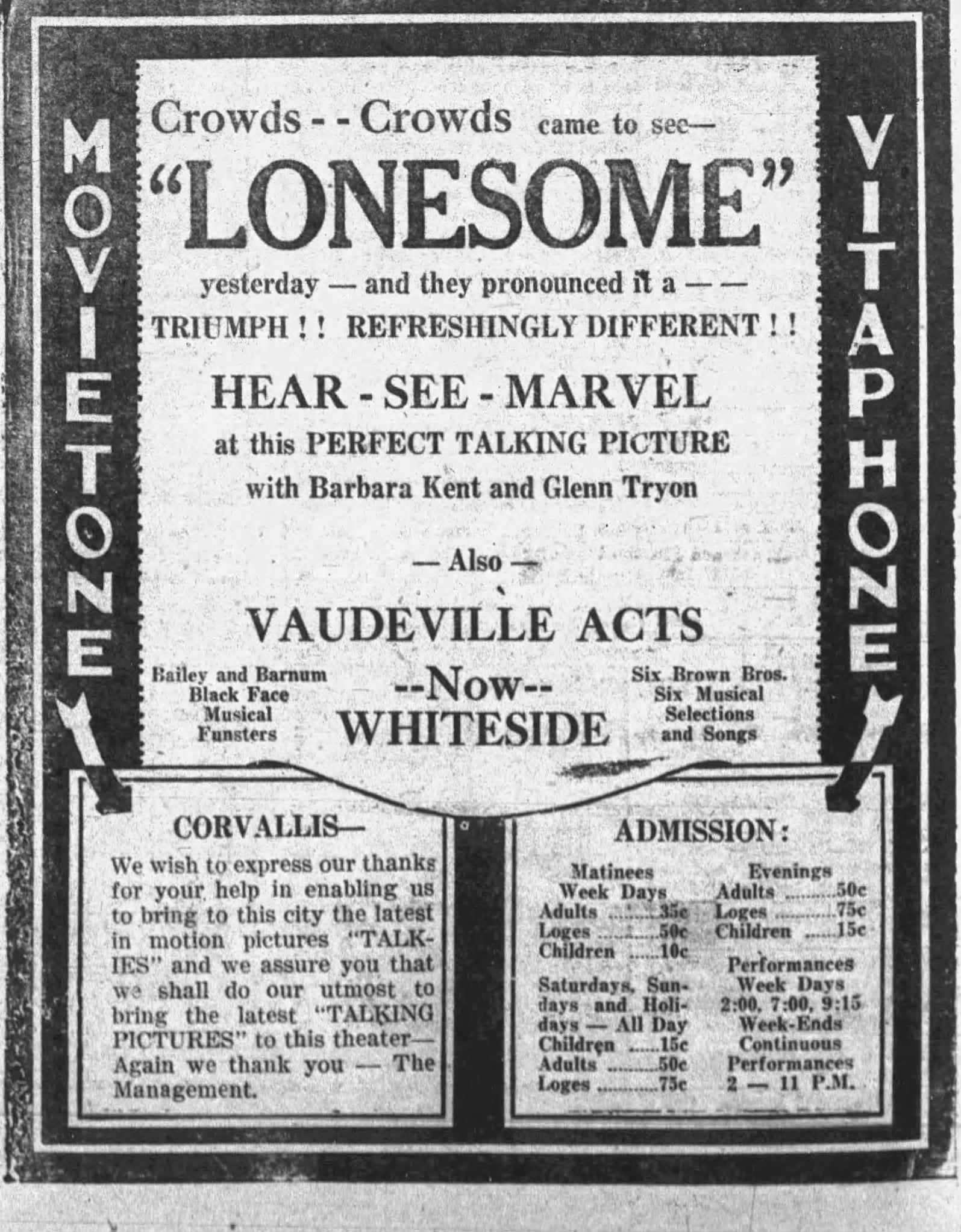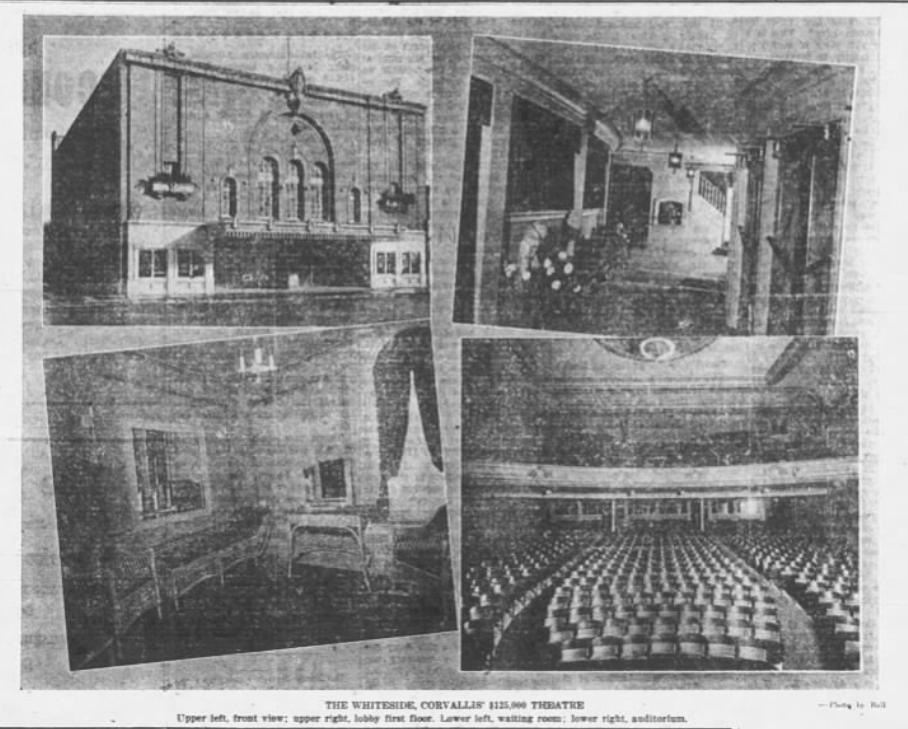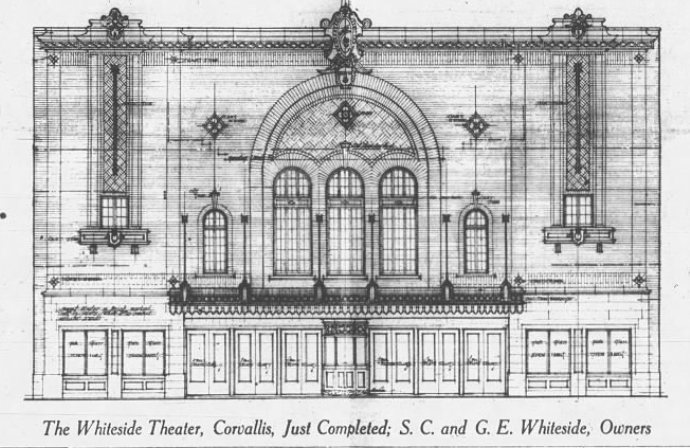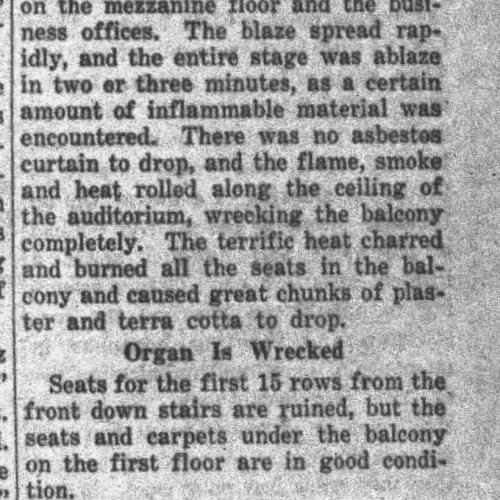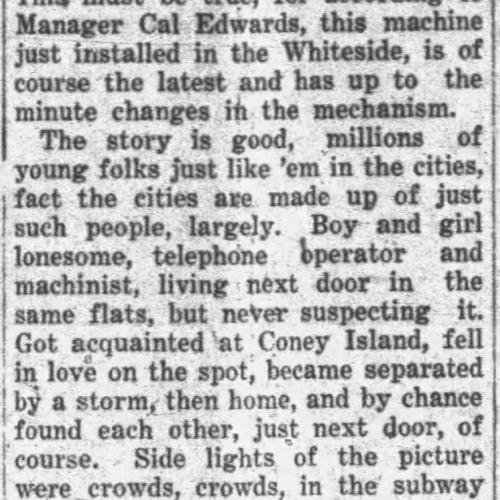The Whiteside opened with The Old Homestead. The theater was mainly built for cinema, though there were also live productions that were presented on stage. (1)
Since the Whiteside Brothers were such well known and successful businessmen in Corvallis at the time, the Whiteside Theatre was already seen by everyone as a prominent business before it even fully opened. During and shortly after the opening, the newspapers were filled with tie-ins of local companies promoting both themselves and the new theater. The below advertisement is from Builders Supply Company promoting “Face Brick,” the brick used to build the beautiful Whiteside Theatre, which “looks rich enough to be a million dollar building.” (2)
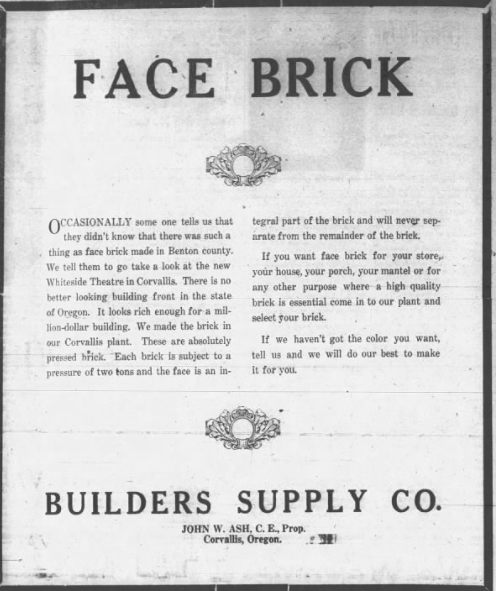
By 1923, it had already earned an impressive reputation as one of the best theaters in the state, second only to the Liberty Theatre, which was located in Portland. With its impressive design, modern technology, and commitment to showcasing the latest and greatest films, the theater set a new standard for Oregon moviegoers.
Designed as a “movie palace,” costing over $100,000 to create and easily becoming the largest, most opulent theater in town, dwarfing all other auditoriums (the Majestic became the second largest theater in town, with 435 fewer seats). (3) The Whiteside prided itself on offering an exceptional moviegoing experience. Unlike smaller theaters at the time, the Whiteside theater made specific efforts to screen only the newest and highest rated films. Some of these films include Infatuation, starring the Corinne Griffith, Hell’s High Road, featuring Leatrice Joy, and Lady Windermere’s Fan, a Warner Bros. production, which were all shown during the first week of April 1926.
Beyond its film selections, the theater was well known for its elaborate interior, which was designed to provide patrons with an experience of comfort. Visitors entered through a grand lobby decorated with Wilton rugs, elegant wall lamps, and a marble drinking fountain. Heavy velvet drapes also lined the theater, making the building seem even more elegant. A massive chandelier took up the ceiling, and was a replica of the one found in the famous Pantages Theater in Los Angeles. The balcony was another highlight of the theater’s layout, as it offered a premium seating experience. The first two rows of the balcony were designated as loge seating, which provided an elevated view of the screen and an extra level of comfort for those who could afford it. Another one of the theater’s most impressive features was its enormous Wurlitzer Organ, an instrument that added depth and emotion to silent films. Installed as part of the theater’s commitment to providing the best possible cinematic experience, the organ was bought for $20,000. It was the second-largest Wurlitzer in the state, reaffirming the theater’s prestige and influence.
The theater was also known for its exterior. Three gardens decorated the front of the building, each equipped with lighting system that allowed the plants to be illuminated in various colors. Seating in the Whiteside Theater was planned for both comfort and safety. Unlike other theaters, which used wooden flooring, the seats at Whiteside were set upon on a concrete foundation. This design not only enhanced fire resistance but also contributed to the rise of the theater’s reputation as one of the most advanced and well-built entertainment venues in the region.
The evolution of the Whiteside Theater was made possible through much reconstruction and many modernization efforts. The Charles L. Swain oversaw the general contracting work which transformed the theater into the prestigious building. Additionally, the Colf Clark Electric Company handled the extensive rewiring of the theater, ensuring that its lighting and electrical systems met all of the highest standards of the time. This modernization allowed for more advanced projection capabilities and a safer, more reliable experience for patrons.

On the 19th of October, 1927, a fire destroyed the interior of the theater. Everyone in the theater at the time (roughly 50 patrons) managed to escape safely. Fortunately, the fire department was across the street and the fireman were able to put out the fire. However, the theater suffered over $50,000 in damage. The interior of the theater was completely remodeled soon after, with a brand new Wurlitzer organ, cove lighting and chandelier.
On December 26, 1928, the Whiteside Theatre showed the first talking film in Corvallis, Lonesome, which starred Glenn Tyron and Barbara Kent. It was advertised as “a perfect talking picture” – “Talk where talking is needed, silence where silence is golden.”
